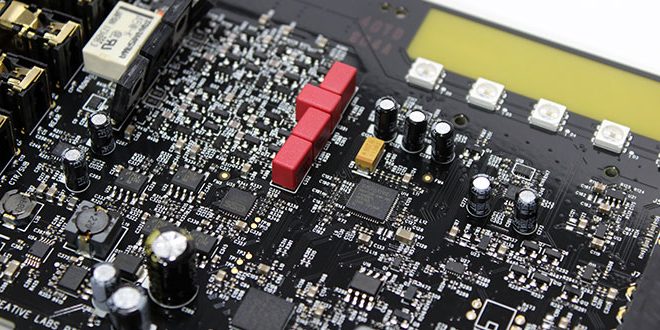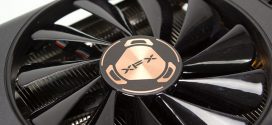Time to look at what feels like an old friend
Before we dive into the new Sound BlasterX AE-5 we must do a little archeology. Put on your time traveler hats as we look back into the origins of PC as I grew up with.
I an remember the beginning days of my PC experience. It was ISA slots and several KB of onboard RAM. Yea that’s right, back then we did not judge or even think of memory in Megabytes but in Kilobytes.. Motherboards back then also were very barren for connectivity with only the basics such as a 5 pin DIN connector for the keyboard connection. This was about 4x the size of the already obsolete PS2 connection you see on what we call ancient keyboards now.
The reason for this explanation was to lead to where we are at today. Back in the days of the early personal computer or PC every option you wanted on your PC had to be added via expensive and sizable expansion cards. one of which, we take for granted every day that motherboards come with onboard audio controllers when back in the early days it was an added cost and it occupied precious ISA slot space. Back then there were only a few players and the most prevalent at least for me growing up in southern California was either Creative and AdLib cards. The AdLib cards were the most prevalent and widely used form my experience early on but as Creative really began to push Sound Blaster branding and stronger audio performance we saw a defined shift in preference. I do believe a lot of this had to do with branding as well as AdLib by comparison felt very business or corporate while creative made it their business to build very “modern” or gamer style packaging which engaged with the new breed of PC gamers starting to come into play.
Back then you really had to know what you were doing when assembling or adding parts to your PC as you had to address and configure every device for memory addressing and specific IRQ’s. One of my first Audio add in cards much like the one I will be showing you today was a Creative unit although it was a huge card which fit into the massive ISA slot on my XT motherboard. It did not have any of the features you get even with the most basic motherboard audio now but back in those days the most basic low bit rate sound was considered groundbreaking as you play your game from your 5.25″ floppy disks.
Now Fast forward to today and we have the new Creative Labs Sound BlasterX AE-5 which is a relatively small footprint internal audio card sporting powerful internal AMPs and Sabre32 DAC which can deliver 32-bit audio at up to 384kHz playback. And includes RGB support, yea I know…
The Sound BlasterX AE-5 comes to market at $139.99 which is a costly add on for your system.
- Creative Labs Sound BlasterX AE-5 $ 139.99
This price may seem a bit rough especially when most all motherboards include audio onboard which many of us have come to the conclusion is “good enough”.
Now the reason I am even writing this is that I am one of those who for the better part of over 10 years now have not touched an audio card really as I feel the onboard motherboard audio is good enough. So without further hesitation lets look at what makes this special and if it is worth the investment.
Features
This is where we pick some of the marketing points the manufacturer offers, then we explore them through our testing.
- Sabre32 PCIe DAC
- Discrete headphone amp
- Allows for each ear cup in your favorite headset to be driven by its own amplifier rather than sharing the same amp across both. Supports down to 1Ω and up to 600Ω
- BlasterX Acoustic Engine
- Software suite to enhance audio experience
- Scout Mode
- Audio enhancement designed to let you hear key details more clearly which can give you a competitive edge by hearing your enemy approaching in your favorite FPS
- Scout 2.0 (Scout Radar)
- Add on companion app for mobile devices which visually shows the location of where sounds are coming from such as enemy players.
- RGB support
- Onboard RGB lighting and an accessory port where you can plug included Addressable RGB strips into for controllable system lighting.
With those out of the way now lets see what we get with this card.
 Bjorn3D.com Bjorn3d.com – Satisfying Your Daily Tech Cravings Since 1996
Bjorn3D.com Bjorn3d.com – Satisfying Your Daily Tech Cravings Since 1996










very nice review, you did not mention though, that the direct HP / speaker port will allow for 32bit / 384khz – whereas the other ports are 32/96 🙂
love my card, paired with DT 990Pro 250ohm studio headphones.
alot of onboard audio using the ACL1220 codec for example, will apply audio compression when you enable the equializer, making the sound sound like it is “stopped” from reaching its peak – its terrible, muddy and unclear.
like you, i found the difference to be like night and day.
https://imgur.com/a/5QHgXgy
looks good too!
Wow, that looks really nice 🙂
Thank you for the feedback, as you can see I always try to add as much information as I can, but sometimes things do slip by.
Yes, it really did make a rather noticeable difference.
I was blown away of how much better the Audio is into my B&O headphones with the AE-5…. Why are Soundcards/DAC’s so forgotten!!!
Well they aren’t lol, nobody remotely interested in audio uses onboard soundcards. There are just a bunch of people online nowadays who follow the “it’s digitial and it all sounds the same”, which is of course nonsense. The best part is that 99,99% of those people have zero experience with remotely high quality headphones or audio setups, and their opinions are based on what someone else told them. Any time someone tells you there is no difference between on-board sound cards and external DAC’s or separate high quality sound card, just block out anything else they say about the topic because they clearly lack basic knowledge and have zero experience, or are just flat out deaf.
lol, I tend to agree, but I have also playted in a band in what seems like a previous life… The amount of difference between even the ‘high end’ or tweaked codecs/solutions (I use the word high-end very loosely when referencing any onboard audio) I see quite an improvement even in a simple card like the AE-5. There are far better solutions but for most users, this would be a huge step forward.
““it’s digital and it all sounds the same” The amount of times I have heard this line makes me absolutely cringe. I gave up arguing with people about this sort of stuff. ignorance is bliss for them.
Iam new to this and have the HC V 770 and trying to figure out what software I need to get / edit videos from sd card for facebook or youtube . Please help , thanks
Most of the comments are the usual ridiculous audiophool nonsense one would expect.